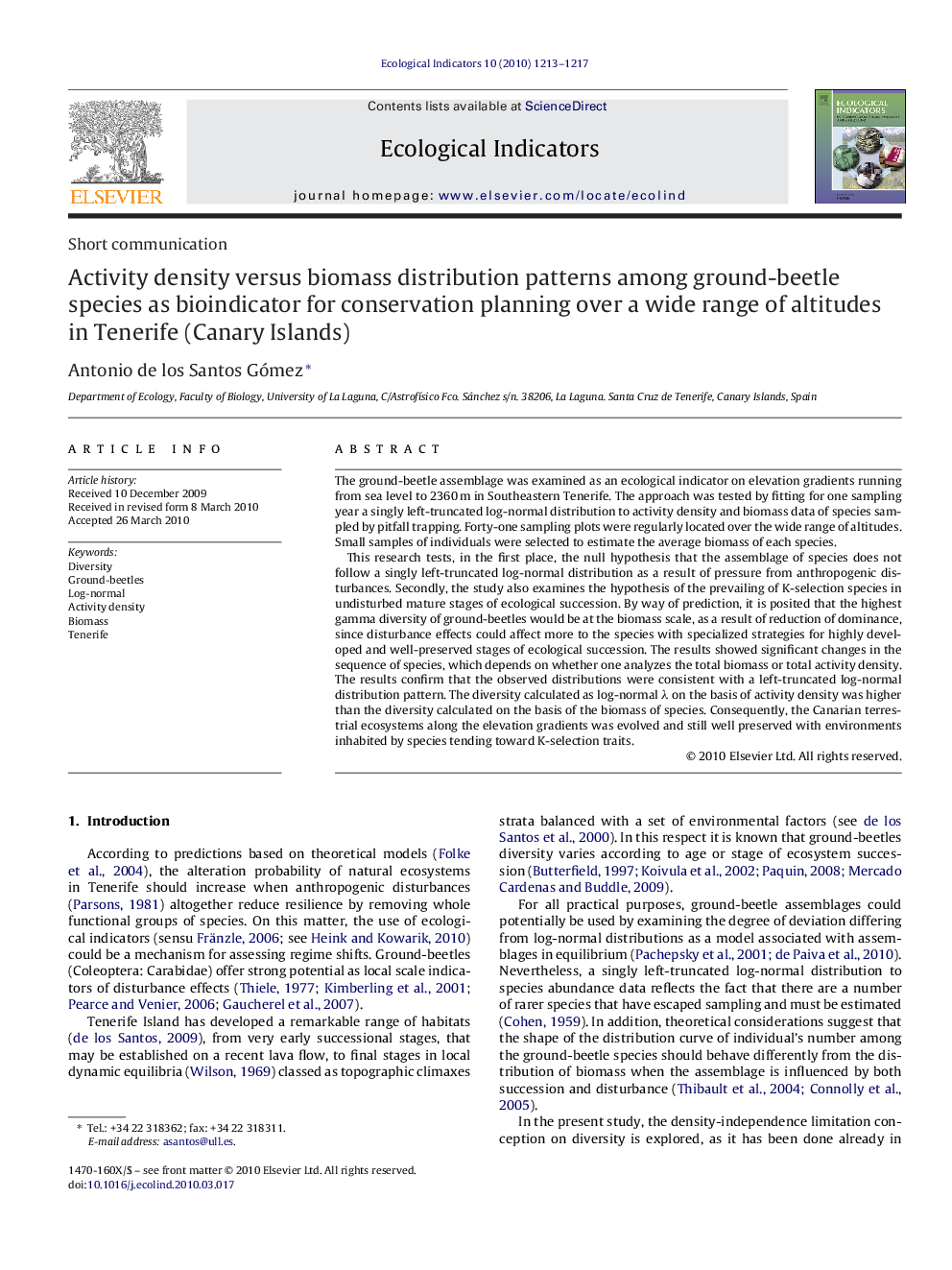| Article ID | Journal | Published Year | Pages | File Type |
|---|---|---|---|---|
| 4373867 | Ecological Indicators | 2010 | 5 Pages |
The ground-beetle assemblage was examined as an ecological indicator on elevation gradients running from sea level to 2360 m in Southeastern Tenerife. The approach was tested by fitting for one sampling year a singly left-truncated log-normal distribution to activity density and biomass data of species sampled by pitfall trapping. Forty-one sampling plots were regularly located over the wide range of altitudes. Small samples of individuals were selected to estimate the average biomass of each species.This research tests, in the first place, the null hypothesis that the assemblage of species does not follow a singly left-truncated log-normal distribution as a result of pressure from anthropogenic disturbances. Secondly, the study also examines the hypothesis of the prevailing of K-selection species in undisturbed mature stages of ecological succession. By way of prediction, it is posited that the highest gamma diversity of ground-beetles would be at the biomass scale, as a result of reduction of dominance, since disturbance effects could affect more to the species with specialized strategies for highly developed and well-preserved stages of ecological succession. The results showed significant changes in the sequence of species, which depends on whether one analyzes the total biomass or total activity density. The results confirm that the observed distributions were consistent with a left-truncated log-normal distribution pattern. The diversity calculated as log-normal λ on the basis of activity density was higher than the diversity calculated on the basis of the biomass of species. Consequently, the Canarian terrestrial ecosystems along the elevation gradients was evolved and still well preserved with environments inhabited by species tending toward K-selection traits.
